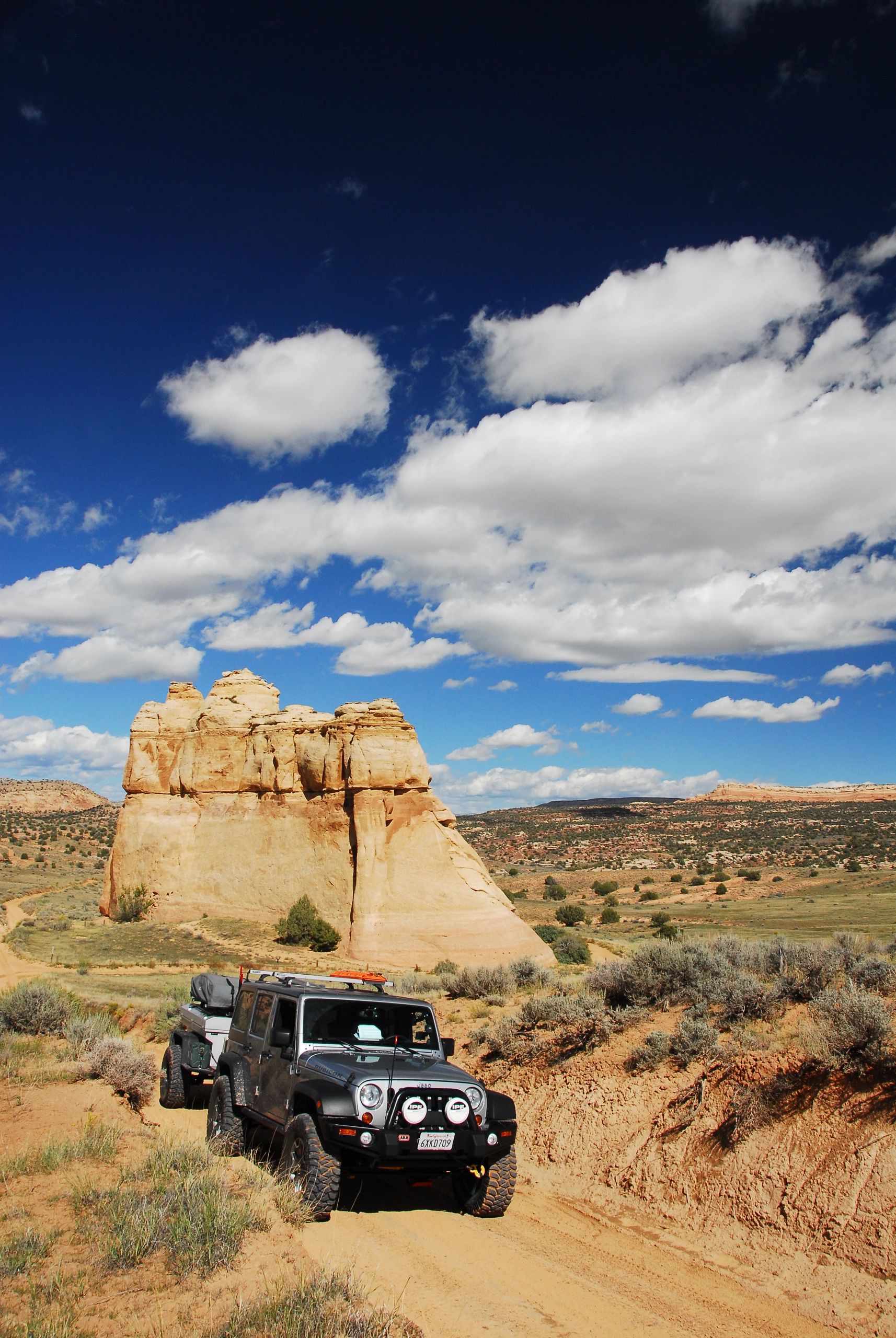I thought I would throw out some field practical use of a tire repair kit....
On a recent 750+ mile long Colorado BDR ( Backcountry Discovery Route ) trip, I had something go through the inside edge of one of the tires. This happened sometime during day 1 or early on day 2 ( of 5 days on the trail). We where doing about 150 miles of dirt a day across Colorado from south to north. The tire was at 12psi when the 'injury' happened. It wasn't a fast leak. Something sharp and thin had gone into the tire, but didn't stay in the tire.

Finding the hole was actually reasonably difficult as it wouldn't leak much air unless it was on the 'bottom' per say. It ended up being easiest to drive the vehicle through a big puddle with a few friends watching for bubbles. With the hole on the bottom in the puddle, the leak showed right up. Even though it didn't work great, I still think having a small spray bottle of soapy water is very handy when looking for issues. I have a half gallon week sprayer that I carry for washing off windows, dishes, hands, cooling off your friends overheating clutch slave cylinder, etc.

Once identified, I decided to try a plug as the hole was pretty small. A single plug went in quick and easy with the tools in the kit. I have onboard air also, so airing up the tire was easy. If this didn't work, I do have a lot of other tire repair gear and as a last resort I do carry a spare 'tire' ( only the tire ) in the bed of the #LX45 with gear packed inside to save space. I am of the opinion that with large tires, the space of a full size spare tire ( and wheel combo ) is just too much to give up. The storage space INSIDE a 40" tire is massive, especially on a smaller vehicle.
Since the trip was basically 750 miles of dirt road from the 4-corners area to the Wyoming border, it gave me plenty of time to test the integrity of the fix. The impressive part to me is that this tire easily went 500+ miles at 12psi on dirt and up to 28psi on one or two pavement sections.
My last 'tip' for this situation, it would be nice to be able to easily 'spot' a tire leak like this before it becomes a bigger issue. I'm pretty sure this tire did many miles in the 3-5psi range before I noticed that I had an issue. I think an OEM, or aftermarket, TPMS system is worth looking into for this. How that system is monitored and displayed is the question. I don't want the system blaring at me for a week that there is already an issue because the tires have been at 12psi for 300 miles already, but it would be nice if it was easy to scan the system to have it point out a real issue before it is too late. In my opinion that could be a VERY large pressure window though.
I hope that this helps give people some confidence that 'repairs' are a viable alternative to replacement, even on long distance trips!




